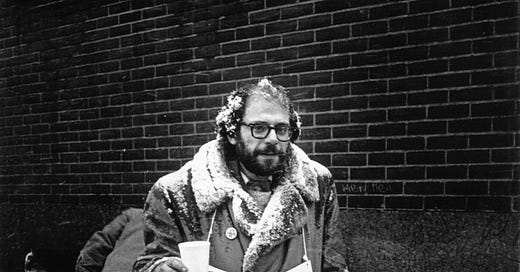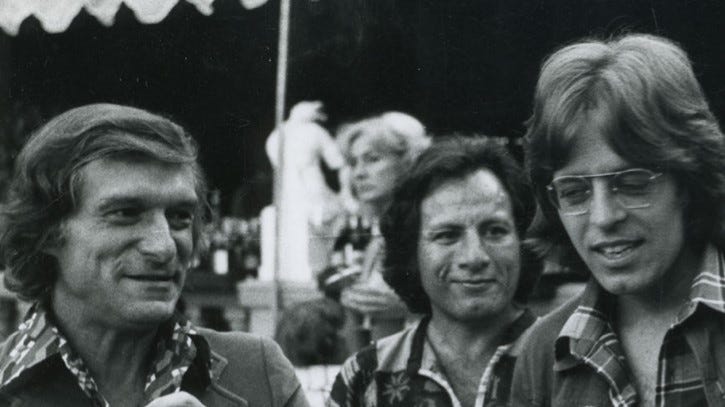LEMAR (1964 - c. 1968) presented the first phase of resource mobilization in the marijuana legalization movement: Self-funded by a small handful of advocates who performed the first public actions in support of ending marijuana prohibition, beginning on August 16,1964. Their message: “POT is FUN”
(Allen Ginsberg, NYC LEMAR, 1964. Photo: Benedict J. Fernandez)
AMORPHIA (1967- 1974) presented the second phase of resource mobilization in the marijuana legalization movement: A subculture of users is tapped into for funding via offering a product they need when using marijuana, Acapulco Gold rolling papers.
(“The Marijuana Review” was the first cannabis periodical. Photo: Michael Aldrich, editor)
NORML (1970 - ) originated the third phase of resource mobilization in the marijuana legalization movement: A few deep-pocketed benefactors for a national organization plus self-funded, volunteer local chapters. The focus on consumer advocacy prioritizes repealing prohibition, and takes place during the time marijuana use rates rose rapidly in the U.S. (1970 - 1979) and use began appearing regularly in popular culture.
(NORML benefactor Hugh Hefner (l) and NORML founder Keith Stroup (r) early 1970’s. Photo from norml.org)
MPP (1994 - ) formed the fourth phase of resource mobilization in the marijuana legalization movement: Billionaires endowed professional lobbying and campaign organizations. The message shifts from consumer advocacy to simply ending marijuana prohibition. MPP has no chapters or volunteer members who work under the organization’s umbrella. MPP has specified they are not in favor of use; they are opposed to cannabis prohibition.
(Rob Kampia, former NORML staffer & MPP founder. Photo: Patrick MacMullin)
THE FLORAL SOCIETY (2024 - ) represents the fifth phase of resource mobilization in the marijuana legalization movement: Legal users are sourced for funding reforms in prohibition states by offering services that enhance their consumption, especially in social settings. Revenue comes from memberships, branded events, licensed goods and IP, and network access (internal paid promotions to the known consumers that are the members). Need an event space where consumption is normal? Need a test market for your products? Need someone to certify judges for your cannabis competition? Looking for what the vanguard of cannabis consumption is smoking, where they are hanging out, what they are watching and listening to? Want to get your brand in front of the tastemakers of legal cannabis? That is what The Floral Society offers to the consumer and the culture.
The impetus for influencing policy comes from the users themselves, and always has. Lobbying monies come from consumers, and go straight through retailers’ and manufacturers’ hands, to their lobbyists. There is a massive amount of consumer-derived resources going to influence policy–far more than ever before, and virtually none of it gives consumers an active voice.
Consumers need protection from prohibitionists most, but where they are no longer a dire concern consumers need non-commercial advocacy. They are their own best advocates and their own best resource. Cannabis consumers’ power to make a market needs to be effectively channeled.
Both NORML and MPP are suffering financially at this time. Their reliance on too few large donors has come back to haunt them. It took relatively few people to lose interest. Once legalization was achieved in their world, they lost the urgency to further the cause. Reformers at the national level openly discuss how the federal reforms that were projected to happen as our largest states made medicinal and then adult use legal have not happened. It does not appear to be a matter of a few holdouts. The majority of the House and Senate now represent states with legal medicinal and/or adult use, yet we’ve been waiting years for banking or other significant reform to pass.
The Floral Society will create the tools that dedicated consumers need to build an organization that will have cultural, political and social significance to influence other consumers and therefore shape policy by encouraging and facilitating self-advocacy. Imagine AAA meets the NRA meets Ben & Jerry’s.








